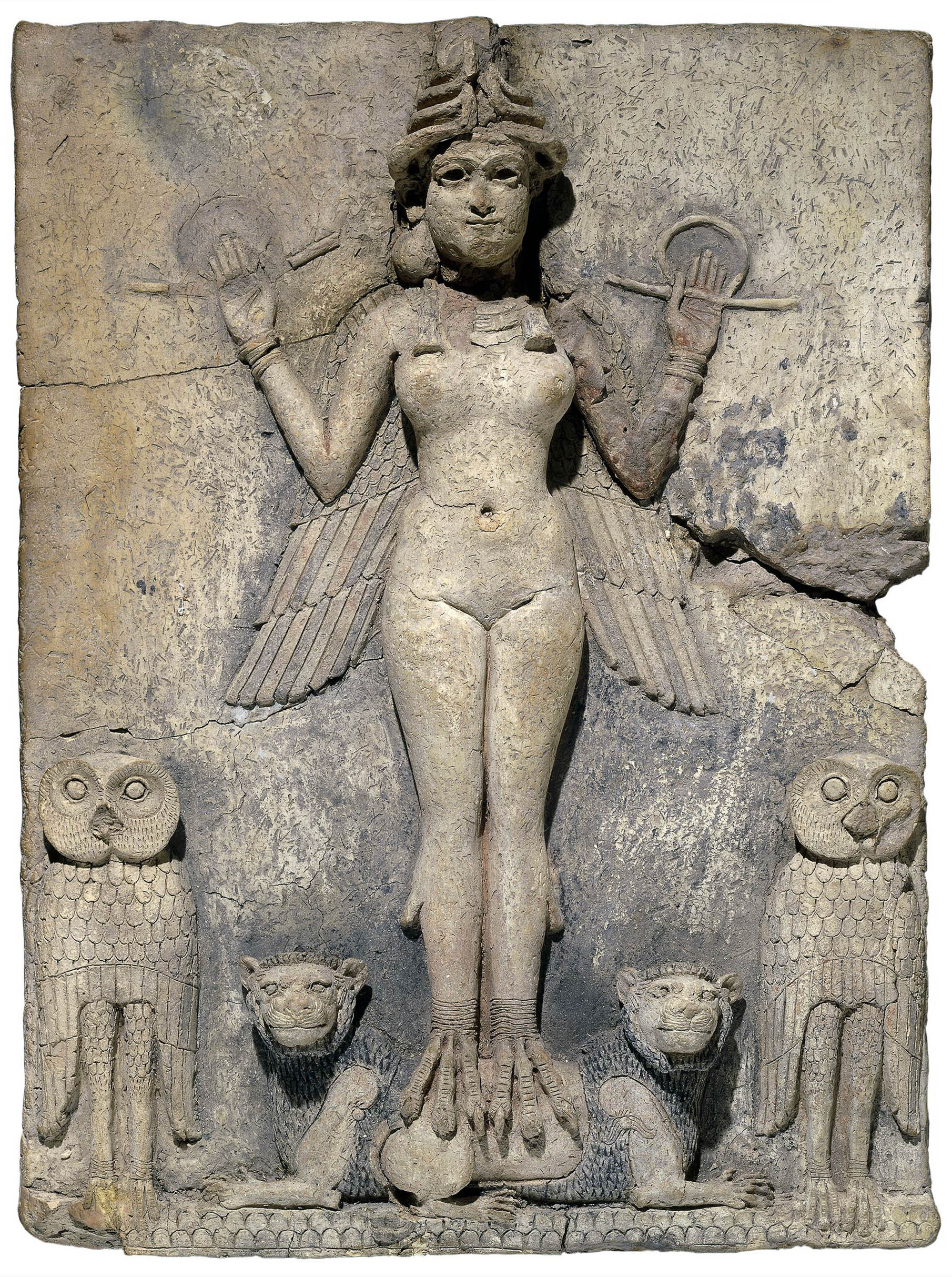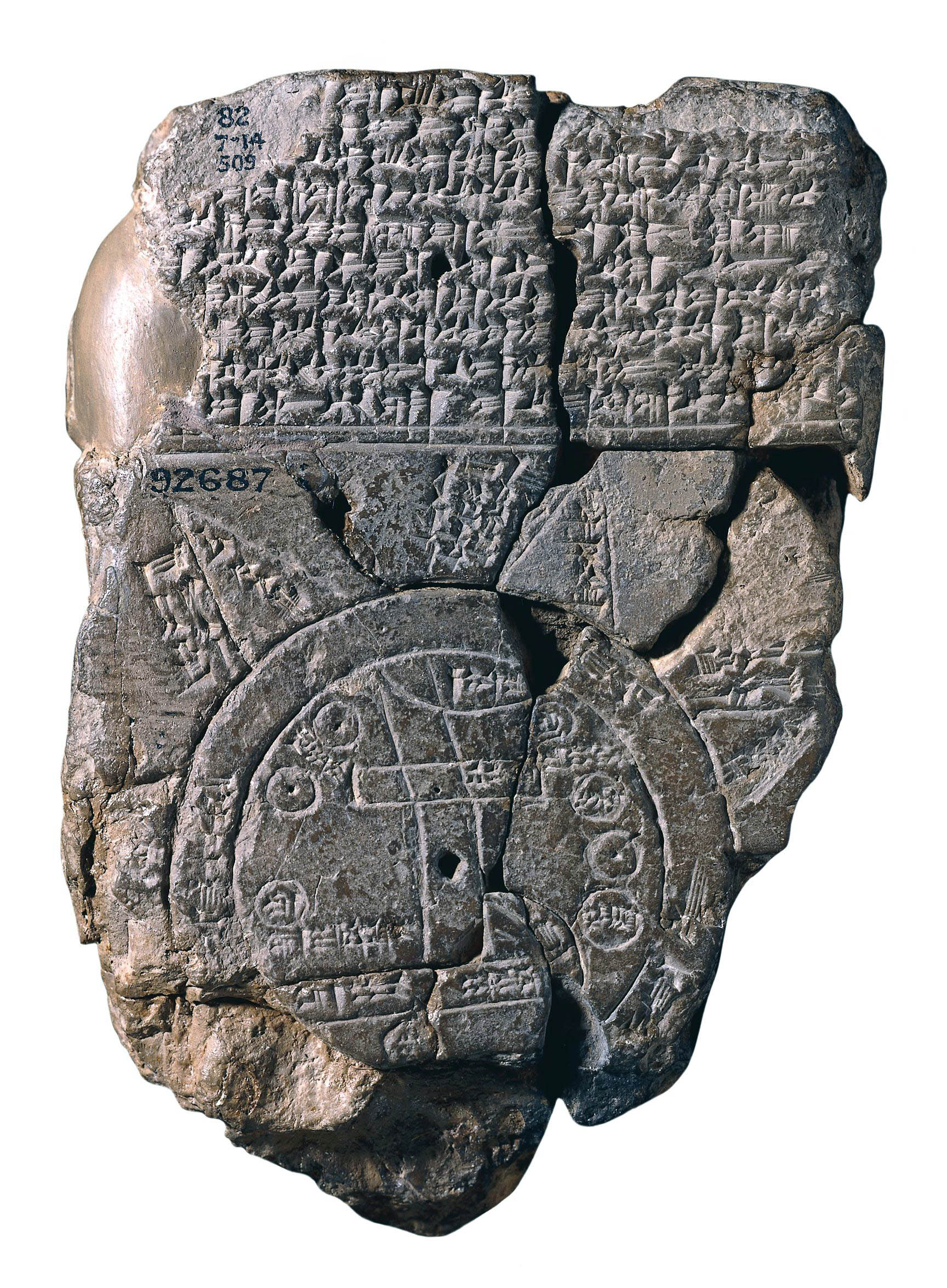On the river Euphrates
The city of Babylon on the river Euphrates in southern Iraq is mentioned in documents of the late third millennium B.C.E. and first came to prominence as the royal city of King Hammurabi. He established control over many other kingdoms stretching from the Persian Gulf to Syria. The British Museum holds one of the iconic artworks of this period, the so-called “Queen of the Night.”

The “Queen of the Night” relief, Old Babylonian, 1800–1750 B.C.E., fired clay, from southern Iraq (© The Trustees of the British Museum)
From around 1500 B.C.E. a dynasty of Kassite kings took control in Babylon and unified southern Iraq into the kingdom of Babylonia. The Babylonian cities were the centers of great scribal learning and produced writings on divination, astrology, medicine and mathematics. The Kassite kings corresponded with the Egyptian Pharaohs as revealed by cuneiform letters found at Amarna in Egypt, now in the British Museum.
Babylonia had an uneasy relationship with its northern neighbor Assyria and opposed its military expansion. In 689 B.C.E. Babylon was sacked by the Assyrians but as the city was highly regarded it was restored to its former status soon after. Other Babylonian cities also flourished; scribes in the city of Sippar probably produced the famous Map of the World.
Babylonian kings
After 612 B.C.E. the Babylonian kings Nabopolassar and Nebuchadnezzar II were able to claim much of the Assyrian empire and rebuilt Babylon on a grand scale. Nebuchadnezzar II rebuilt Babylon in the sixth century B.C.E. and it became the largest ancient settlement in Mesopotamia. There were two sets of fortified walls and massive palaces and religious buildings, including the central ziggurat tower. Nebuchadnezzar is also credited with the construction of the famous “Hanging Gardens.” However, the last Babylonian king Nabonidus was defeated by Cyrus II of Persia and the country was incorporated into the vast Achaemenid Persian Empire.

Map of the World, Late Babylonian, c. 500 B.C.E., clay, probably from Sippar, southern Iraq, 12.2 x 8.c cm (© Trustees of the British Museum)
New threats
Babylon remained an important center until the third century B.C.E., when Seleucia-on-the-Tigris was founded about ninety kilometers to the northeast. Under Antiochus I, the new settlement became the official Royal City and the civilian population was ordered to move there. Nonetheless a village existed on the old city site until the eleventh century A.D. Babylon was excavated by Robert Koldewey between 1899 and 1917 on behalf of the Deutsche Orient-Gesellschaft. Since 1958, the Iraq Directorate-General of Antiquities has carried out further investigations. Unfortunately, the earlier levels are inaccessible beneath the high water table. Since 2003, our attention has been drawn to new threats to the archaeology of Mesopotamia, modern day Iraq.
For two thousand years the myth of Babylon has haunted the European imagination. The Tower of Babel and the Hanging Gardens, Belshazzar’s Feast and the Fall of Babylon have inspired artists, writers, poets, philosophers and film makers.
© Trustees of the British Museum
Additional resources
Read a chapter in our textbook, Reframing Art History, about rethinking how we approach the art of the Ancient Near East.
Ancient Babylon: excavations, restorations and modern tourism.

